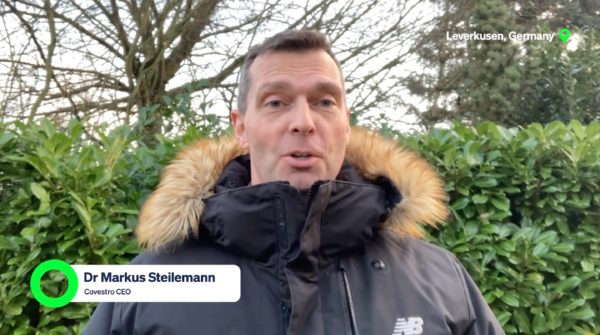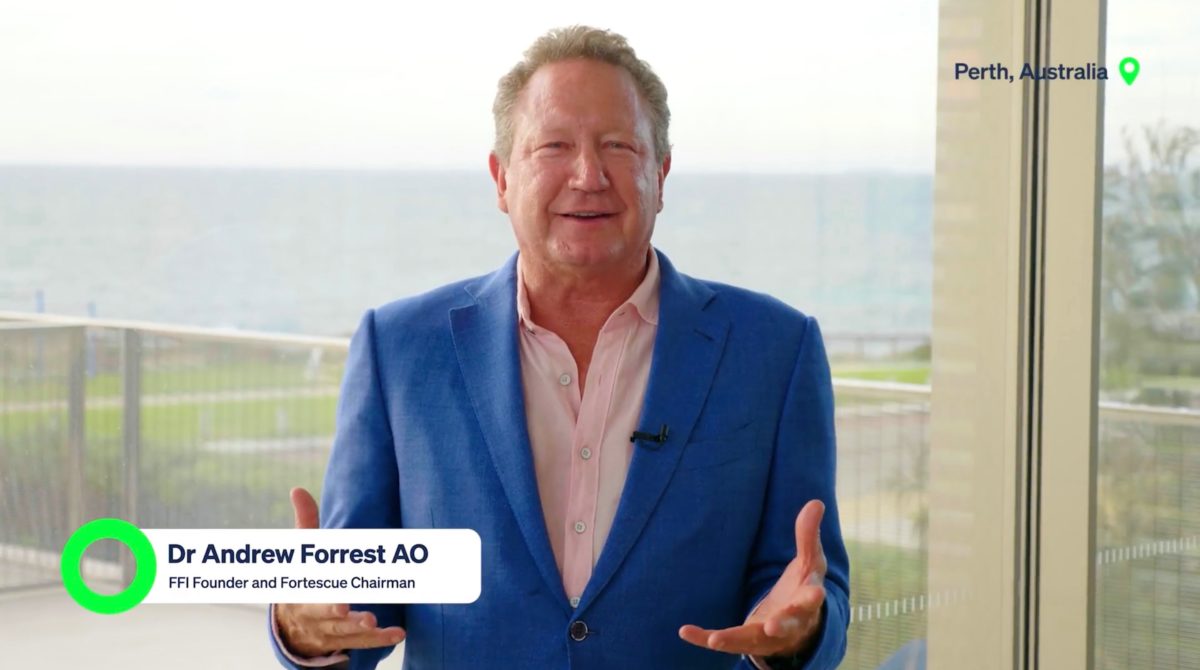Fortescue Future Industries’ (FFI), the wholly owned subsidiary of Australian-based iron ore giant Fortescue Metals Group, is continuing to act on its similarly gigantic green hydrogen ambitions with the announcement of a long-term supply deal with leading German polymer company Covestro. The Memorandum of Understanding (MoU) will see FFI supply Covestro with green hydrogen and its derivatives, including green ammonia, starting as early as 2024.
The MoU states that FFI and Covestro plan to formalise an agreement which will see the former supply the latter with the equivalent of up to 100,000 tonnes of green hydrogen annually. That amount is enough to reduce Covestro’s CO2 emissions by up to 900,000 tonnes a year through the replacement of its current usage of grey hydrogen.
Though the announcement does not state where exactly FFI’s supply will come from, it does state the deliveries are vaguely earmarked for three potential locations – Asia, North America and Europe.
FFI founder and Fortescue chairman Andrew Forrest has previously announced ambitious plans to build one of the biggest renewable energy portfolios in the world, delivering more than 235 GW of renewable capacity. And in recent months, FFI has also announced plans with AGL to flip New South Wales’s coal generators in the Hunter Valley to green hydrogen, to build the world’s biggest electrolyser manufacturing plant in Queensland as well as a 1 GW solar manufacturing plant, presumably also in Queensland though the location is not yet finalised.
Considering Swinburne University of Technology senior research fellow Steven Percy’s research shows far north Queensland and Tasmania are the best and cheapest locations to produce green hydrogen, Queensland seems a likely source.
“This is a ground-breaking collaboration which reinforces the power of green hydrogen to accelerate the decarbonisation of some of the most energy-intensive industries around the world,” said Forrest. “FFI and Covestro share the belief that green hydrogen and green ammonia will play a crucial role in enabling companies to reach their climate targets and preventing runaway global warming.”
“We look forward to working with Covestro to supply their green hydrogen needs,” continued Forrest, “and collaborating with Germany to enable it to become the world leader in global decarbonisation, green hydrogen and ammonia.”
Covestro uses hydrogen and ammonia as feedstock in the production of its polymers that are used in industries stretching from automotive to construction and electronics. Many of these industries are considered hard to decarbonise without green hydrogen. The company has committed itself to the energy transition and is seeking alternatives to fossil fuels via renewables.
Covestro CEO Markus Steilemann said the company is delighted that “FFI shares our circular economy vision and is willing to take courageous steps to foster the urgently needed market ramp-up for green hydrogen.”
“Our collaboration with FFI underlines our ambition to pioneer the transition towards a circular economy and climate-neutral production. Green hydrogen and its derivatives play a key role for the chemical industry, both as an alternative feedstock and a source of clean energy,” continued Steilemann, adding that the MoU “will be an important step forward in our efforts to offer more sustainable products that also reduce the carbon footprint of our customer industries.”
In a video that accompanied the announcement, Forrest described Australia’s sunshine as “iconic” and something which could prove a “great export hit, one that can create jobs, grow economies and help save our cooking planet.

Image: Fortescue Future Industries / Screenshot
Responding from a frightfully cold looking Leverkusen, Germany, Steilemann said he was jealous of Australia’s sun and noted that “it would be so great to have a little bit of sun from Australia here in Germany.”
Forrest went on to express his excitement for the partnership, which would see the trade of Australian solar (in the form of green hydrogen) with Germany.
FFI’s ambition is to produce 150 million tonnes of green hydrogen by 2030, accelerating to 50 million tonnes per year in the following decade.
This content is protected by copyright and may not be reused. If you want to cooperate with us and would like to reuse some of our content, please contact: editors@pv-magazine.com.









1 comment
By submitting this form you agree to pv magazine using your data for the purposes of publishing your comment.
Your personal data will only be disclosed or otherwise transmitted to third parties for the purposes of spam filtering or if this is necessary for technical maintenance of the website. Any other transfer to third parties will not take place unless this is justified on the basis of applicable data protection regulations or if pv magazine is legally obliged to do so.
You may revoke this consent at any time with effect for the future, in which case your personal data will be deleted immediately. Otherwise, your data will be deleted if pv magazine has processed your request or the purpose of data storage is fulfilled.
Further information on data privacy can be found in our Data Protection Policy.